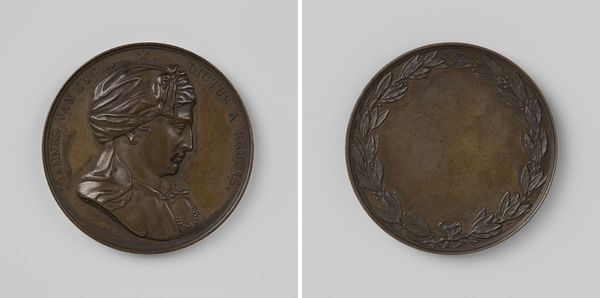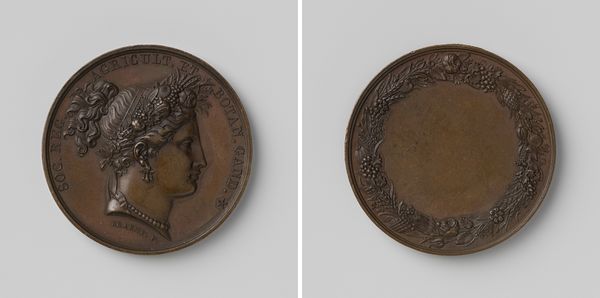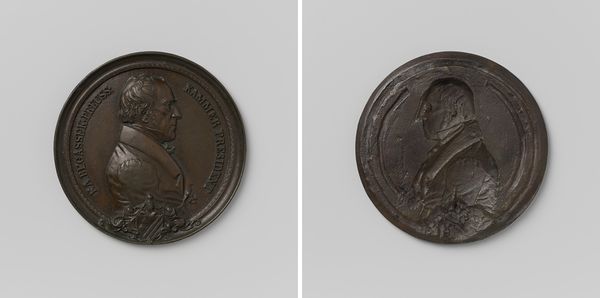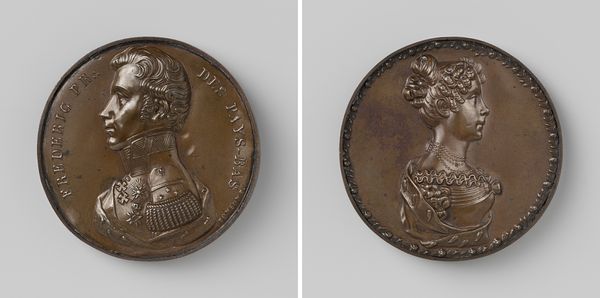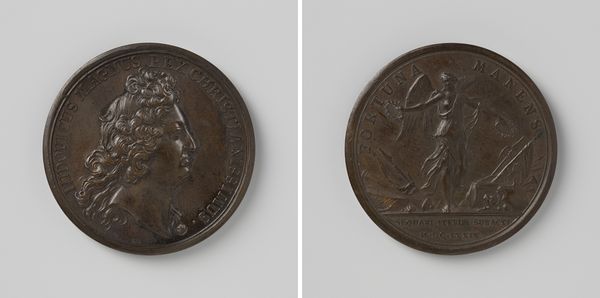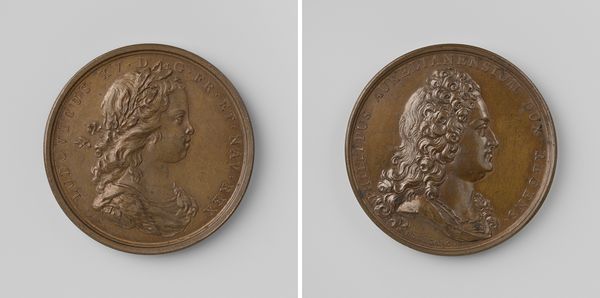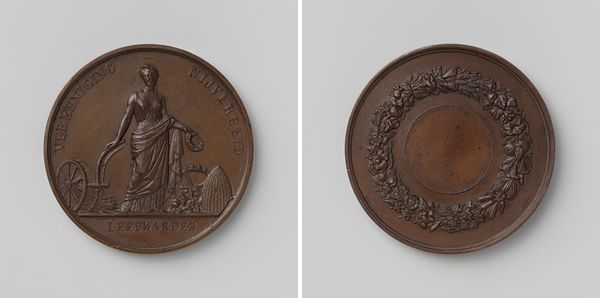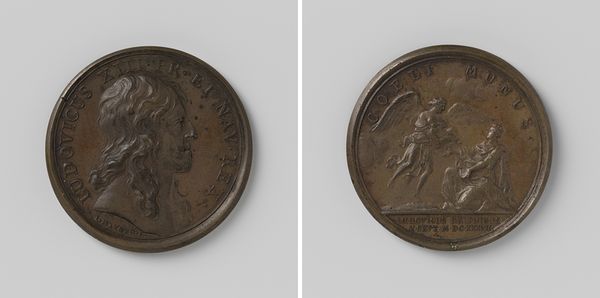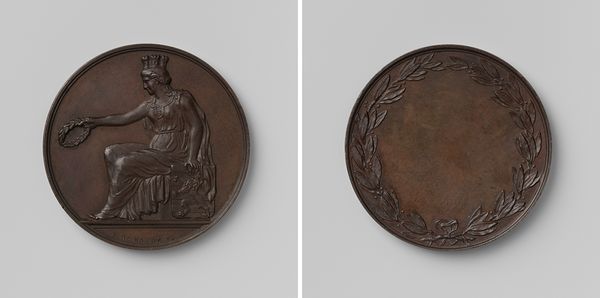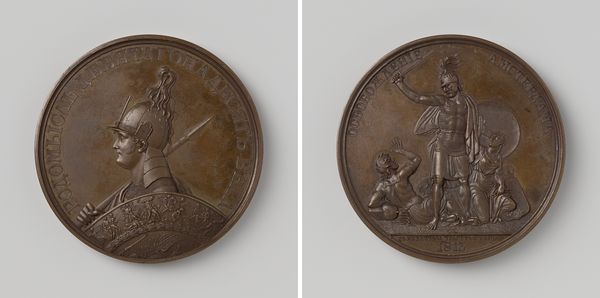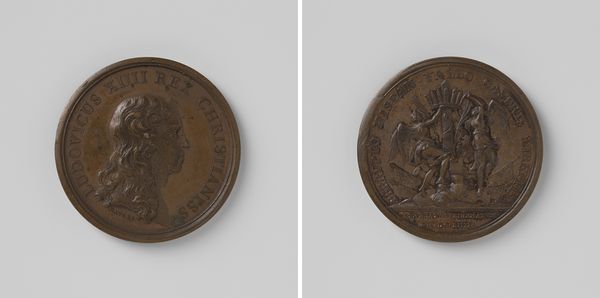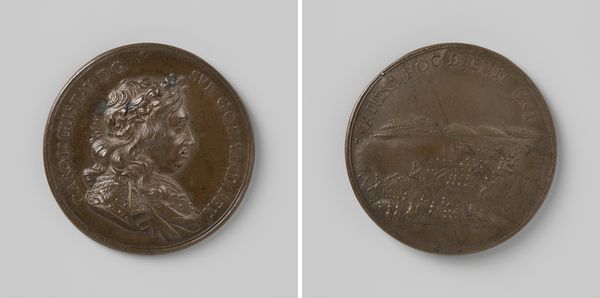
relief, bronze, sculpture
#
portrait
#
allegory
#
sculpture
#
relief
#
classical-realism
#
bronze
#
sculpture
#
ceramic
#
decorative-art
Dimensions: diameter 5.6 cm, weight 71.23 gr
Copyright: Rijks Museum: Open Domain
Curator: This intriguing bronze relief is titled "Tentoonstelling van tuinbouw te Amsterdam," or "Horticultural Exhibition in Amsterdam," created in 1865 by Leopold Wiener. What strikes you first? Editor: It's surprisingly elegant for what one might expect from commemorative piece. The allegorical figure has a gentle grace and sense of bounty. The way she offers garlands is quite welcoming. Curator: Indeed. It speaks volumes about how the organizers wished the event to be perceived. In 1865, horticulture wasn’t just a practical endeavor; it was tied to national pride, scientific advancement, and even colonial ambitions, displayed as refinement. The sculpture offers not just an impression but also embodies political and social values related to this industrial expansion. Editor: Looking at the back design—the tools and plants framing what would probably have held an inscription – it reads as an organized cultivation. Curator: Precisely. The tools aren't merely functional, they're emblems of progress. Horticultural expositions at this time played a crucial role in showcasing not just advancements in agriculture but in fostering competition and spreading knowledge. Wiener likely intended that detailed imagery to also connote sophistication and control of natural forces, key ideological components. Editor: And she almost appears to be dancing. What meanings were invested into representing growth and the future. Curator: The figure embodies Ceres, the Roman goddess of agriculture, which connects her symbolically with nourishment, growth, and maternal abundance. Choosing that established, familiar representation reinforced notions of prosperity. Editor: It feels, also, like they were planting seeds, or visual symbols, for later harvests and understandings of that era. Curator: Exactly! So, beyond a straightforward commemoration, Wiener crafted this medallion to reflect—or perhaps direct—the narrative around that burgeoning industry. The object exists in a fascinating position: to document something, but simultaneously construct what that “something” would mean, socially. Editor: A tangible impression, then, of ambition rendered in bronze. Curator: Absolutely; its visual choices reveal complex relations of art, science, and societal development.
Comments
No comments
Be the first to comment and join the conversation on the ultimate creative platform.
